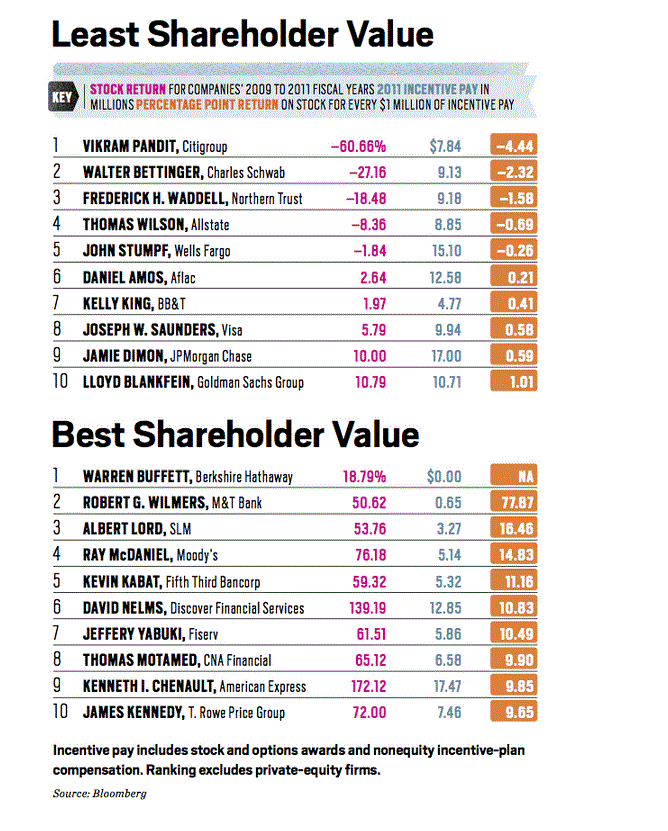The Capstone Project which is a multi-discipline team-based project simulates the entire industry life cycle of a video game in development from concept to completion with a focus on teamwork. Students focus on their preferred discipline of design, art, programming and/or management. Students continue into production for their group based projects. Students use the processes, pipelines, art and technology they created in Pre-production to move into full production. Focus is on project management and being an effective and active participant of a team. The development is managed using Agile methodologies tailored to a production environment.
Business and legal issues for game development are also covered, such as company start-ups and funding options, IP ownership, licensing, contracts, marketing and financial analysis. Students focus on best practices required for building a high quality game, group work, meeting tight deadlines, peer evaluation and giving and receiving constructive criticism. The Capstone Project is a multi-discipline team-based project. The Capstone Project simulates the entire industry life cycle of a video game in development from concept to completion with a focus on teamwork. Students build on the concepts learned and applied in 3-D Game Assets I. Game assets are the virtual objects that make up the interesting and compelling visuals that are part of a modern 3-D video game.
These virtual objects include characters, vehicles, buildings and landscapes which are all needed to create a vibrant world for their Capstone group project. Students continue to refine their skills in 3-D game asset creation including modelling, rigging, skinning and animation in a professional game development pipeline. Emerging technologies such as Virtual Reality , Augmented Reality , and Mixed Reality are explored.
Strong emphasis is placed on the game development pipeline, workflow and best practices in a highly collaborative atmosphere. Students continue to be mentored by faculty and industry topic experts to implement and verify game mechanics through play testing while in production. The Capstone group projects then proceed to Post-production where their titles are polished for release. Culmination of the Capstone project results in a release of a high-quality video game.
Game development pipeline, workflow, best practices, group work, presentations to peers, constructive peer review and other applicable technologies are strongly emphasized. Students exhibit the ability to work as an effective team player and consistently meet milestone deliverables. Students are mentored by faculty and industry topic experts to experiment and implement game mechanics and ideas in Pre-production. Strong emphasis is placed on the game development pipeline, workflow, best practices, group work, presentations to peers, constructive peer review and other applicable technologies. The Capstone Studio gives the student teams unregimented access to state of the art equipment to work on the development of their Capstone projects.
Students consistently exhibit the ability to work as an effective team player and consistently meet milestone deliverables. Students complete the concept and pre-production phases of game development. Students are guided through concept formation and concept pitch presentation. Pre-production starts with planning for game design, documentation, and implementation and ultimately results in a playable demo of their game.
Agile methodologies are introduced and projects are developed using an iterative approach. Continuous Quality Assurance and play testing workflows are put in place. Focus is on best practices required for building a high quality game, group work, meeting tight deadlines, peer evaluation and giving and receiving constructive criticism.
Emphasis is placed on topics such as character animation, transition control, advanced peripherals, porting to multiple platforms, performance optimization, stress testing, unit testing, bug reporting and bug fixing. Emphasis is placed on the game development pipeline, workflow, best practices, group work, constructive peer review and other applicable technologies. The Japanese video game industry is markedly different from the industry in North America, Europe and Australia. Japan initially trailed the United States in entering the video game sector as its companies followed trends set by their American partners, but started to pioneer their own ideas soon after.
Several Japanese-developed arcade games, such as Space Invaders, helped to usher in the golden age of arcade video games from 1978 to 1982. The 1983 video game crash that affected the North American market did have small but short-term effects in Japan, as most companies involved in the business were well-established and could weather the disruption. Japan became the dominate home for consoles and console games through the early 2000s, challenged only by the incorporation of large publishers in the West and the Xbox line of consoles from Microsoft.
Nintendo along with companies like Sega, Sony Interactive Entertainment, and Capcom are dominant leaders in the Japanese video game industry. China had early on not been a major factor in the global video game market early on due to economic factors, governmental oversight, and a black market for foreign products. Media publishers like Tencent and NetEase focused on these types of games, growing successfully during the 2010s to become leading international companies. As of 2015, China's video game market revenue exceeds that of the United States, and is the largest country by both revenue and number of players.
China is also the largest contributor towards esports in both revenue and in the number of professional players from the country. The industry, like most media in China, is tightly controlled by the government, with strong restrictions on what content may be in games, and incorporation of anti-addiction measures to limit playtime. It is home to Asia Game Show, the largest game convention in the world by attendance. The video game industry got its start in the United States in the late 1970s and early 1980s with the creation of arcade games like Pong and the first home console, the Magnavox Odyssey.
Several factors, including loss of publishing control, a flooded market, and competition from personal computers, led to the 1983 video game crash in the U.S., affecting both arcades and home game systems. Nintendo's introduction of the Nintendo Entertainment System helped to revitalize the industry, but until Microsoft's introduction of the Xbox in the early 2000s, the hardware side was dominated by mostly Japanese-developed systems. Artificial intelligence is a foundation cornerstone of game play that enhances the user experience. Students learn to analyze and formulate simulated behaviours for various non-player character classes found in typical video games. Creating conceptual behaviour designs and implementing each is practiced through the use of industry standard programming languages.
Students create dynamic AI systems required for the game industry. Students are also introduced to the design of modern Graphics Processing Units hardware and learn the feature set by which each GPU is evaluated and compared. Focus is on games, which are implemented in 2-D, such as side scrolling and top-down games. Topics include, but are not limited to data structures, vector manipulation, matrix transformations, vertex shaders, fragment shaders, texturing, game flow and memory management.
Increased emphasis is placed on the polishing and refinement of game assets for their Capstone group project. Students are also taught refined animation techniques that are used to simulate life in finished game assets. Students continue to research and implement complex special visual effects for their Capstone group project. Game engine designs are analyzed to include the main game loop, rendering engine, physics engine artificial intelligence, middleware, as well as database schema design and functionality. Students research and implement special visual effects for their Capstone group project.
Advanced shaders, sophisticated cameras, GPU issues relating to performance optimizations, and advanced rendering techniques are studied and implemented. Focus is on exploring, developing and testing game mechanics, prototyping controls, non-playable character AI and experimenting with physics. Before going into full production, many aspects of video game playability are researched and explored.
Consideration is also given to network programming, multiplatform constraints and game state management. Students focus on best practices required for building, a high-quality game, group work, meeting tight deadlines, peer evaluation, and giving and receiving constructive criticism. In 1971, the first commercial arcade video game, Computer Space, was released. The following year, Atari, Inc. released the first commercially successful video game, Pong, the original arcade version of which sold over 19,000 arcade cabinets. That same year saw the introduction of video games to the home market with the release of the early video game console, the Magnavox Odyssey. However, both the arcade and home markets would be dominated by Pong clones, which flooded the market and led to the video game crash of 1977.
The crash eventually came to an end with the success of Taito's Space Invaders, released in 1978, sparking a renaissance for the video game industry and paving the way for the golden age of video arcade games. The game's success inspired arcade machines to become prevalent in mainstream locations such as shopping malls, traditional storefronts, restaurants and convenience stores during the golden age. Space Invaders would go on to sell over 360,000 arcade cabinets worldwide, and by 1982, generate a revenue of $2 billion in quarters, equivalent to $4.6 billion in 2011. Apple's App Store alone has more than 90,000 game apps, a growth of 1,400% since it went online.
In addition, game revenues for iOS and Android mobile devices now exceed those of both Nintendo and Sony handheld video game systems combined. Like most European countries, the UK entered the video game industry through personal computers rather than video game consoles. Low-cost computers like the ZX Spectrum and Amiga 500 led to numerous "bedroom coders" that would make and sell games through mail-order or to distributors that helped to mass-produce them.
Coupled with quirky british humour, the "Britsoft" wave of popular titles led to a number of influential people and studios in the 1990s. The video game industry had its primary roots in the United States following the introduction of arcade games and console systems, with Japan soon following. With the introduction of the personal computer, Western Europe also became a major center for video game development. In 2000s, the video game industry is a juggernaut of development; profit still drives technological advancement which is then used by other industry sectors.
Technologies such as Smartphones, virtual reality and augmented reality are major drivers for game hardware and gameplay development. Though maturing, the video game industry was still very volatile, with third-party video game developers quickly cropping up, and just as quickly, going out of business. Nevertheless, many casual games and indie games were developed and become popular and successful, such as Braid and Limbo.
Game development for mobile phones and social networking sites emerged. For example, a Facebook game developer, Zynga, has raised in excess of $300 million. Canada has the third largest video game industry in terms of employment numbers. The video game industry has also been booming in Montreal since 1997, coinciding with the opening of Ubisoft Montreal. Recently, the city has attracted world leading game developers and publishers studios such as Ubisoft, EA, Eidos Interactive, Artificial Mind and Movement, BioWare, Warner Bros.
Interactive Entertainment and Strategy First, mainly because video games jobs have been heavily subsidized by the provincial government. Every year, this industry generates billions of dollars and thousands of jobs in the Montreal area. Vancouver has also developed a particularly large cluster of video game developers, the largest of which, Electronic Arts, employs over two thousand people.
The Assassin's Creed series, along with the Tom Clancy series have all been produced in Canada and have achieved worldwide success. For consumers, the largest video games convention in Canada is the Enthusiast Gaming Live Expo . Games centered on virtual reality and augmented reality equipment also arose during this decade. The largest such trade show is the E3 in Los Angeles, California is held by the Entertainment Software Association. Other similar trade shows include Tokyo Game Show , Brasil Game Show , EB Games Expo , KRI , ChinaJoy and the annual Game Developers Conference.
The United States has the largest video games presence in the world in terms of total industry employees. In 2017, the U.S. game industry as a whole was worth US$18.4 billion and consisted of roughly 2457 companies that had a rough total of 220,000 people employed. U.S. video game revenue is forecast to reach $230 billion by 2022, making it the largest video game market in the world. Over 150 million Americans play video games, with an average age of 35 and a gender breakdown of 59 percent male and 41 percent female. The early part of the decade saw the rise of 8-bit home computing, and home-made games, especially in Europe and Asia (with the NEC PC-88 and MSX).
This time also saw the rise of video game journalism, which was later expanded to include covermounted cassettes and CDs. In 1983, the North American industry crashed due to the production of too many badly developed games , resulting in the fall of the North American industry. The latter part of the decade saw the rise of the Game Boy handheld system. In 1987, Nintendo lost a legal challenge against Blockbuster Entertainment, which enabled games rentals in the same way as movies. The early 1980s saw the golden age of video arcade games reach its zenith.
By 1981, the arcade video game industry was generating an annual revenue of $5 billion in North America, equivalent to $12.3 billion in 2011. The arcade video game industry would continue to generate an annual revenue of $5 billion in quarters through to 1985. In 2017 in the United States, which represented about a third of the global video game market, the Entertainment Software Association estimated that there were over 2,300 development companies and over 525 publishing companies . These companies in total have nearly 66,000 direct employed workers. When including indirect employment, such as a developer using the services of a graphics design package from a different firm, the total number of employees involved in the video game industry rises to over 220,000. GameStop diversified its services by purchasing chains that repair wireless devices and expanding its trade-in program through which customers trade used games for credit towards new games.
In Britain, the games retailer Game revamped its stores so customers would spend time playing games there. The shift to digital marketplaces, especially for smartphones, led to an influx of inexpensive and disposable titles, as well as lower engagement among gamers who otherwise purchased new games from retail. Customers also shifted away from the tradition of buying games on their first day of release. The arcade video game industry grew out of the pre-existing arcade game industry, which was previously dominated by electro-mechanical games .
As someone who loves to play video games, I know how much it costs to buy new games. One way I make cash to pay for new games is to sell my video games that are no longer in use. Esports is a booming global industry where skilled video gamers play competitively. In the same way that traditional sports have competitions in baseball, basketball, and football, esports encompasses competitions across a variety of video games. Contrary to common perception, esports is not simply a phenomenon occurring in the basements of unemployed twentysomethings; the industry is real, growing globally, and investable. In fact, over 380 million people watch esports worldwide both online and in person.
More people watched the 2016 world finals of popular esports game League of Legends than the NBA Finals Game 7 that year . With its fragmented landscape and digital platform, the esports sector holds promise for a multitude of monetization opportunities. The video game industry in South Korea generally followed the same early trends as the Japanese market, but players started focusing on massively-multiplayer online games and other games that could be played at PC bangs . South Korea was one of the first major regions involved in esports in the 1990s and 2000s, and today a large number of professional esports players originate from South Korea.
On various Internet forums, some gamers have expressed disapproval of publishers having creative control since publishers are more apt to follow short-term market trends rather than invest in risky but potentially lucrative ideas. On the other hand, publishers may know better than developers what consumers want. The relationship between video game developers and publishers parallels the relationship between recording artists and record labels in many ways. But unlike the music industry, which has seen flat or declining sales in the early 2000s, the video game industry continues to grow. Activision was popular among developers for giving them credit in the packaging and title screens for their games, while Atari disallowed this practice. As the video game industry took off in the mid-1980s, many developers faced the more distressing problem of working with fly-by-night or unscrupulous publishers that would either fold unexpectedly or run off with the game profits.





























No comments:
Post a Comment
Note: Only a member of this blog may post a comment.